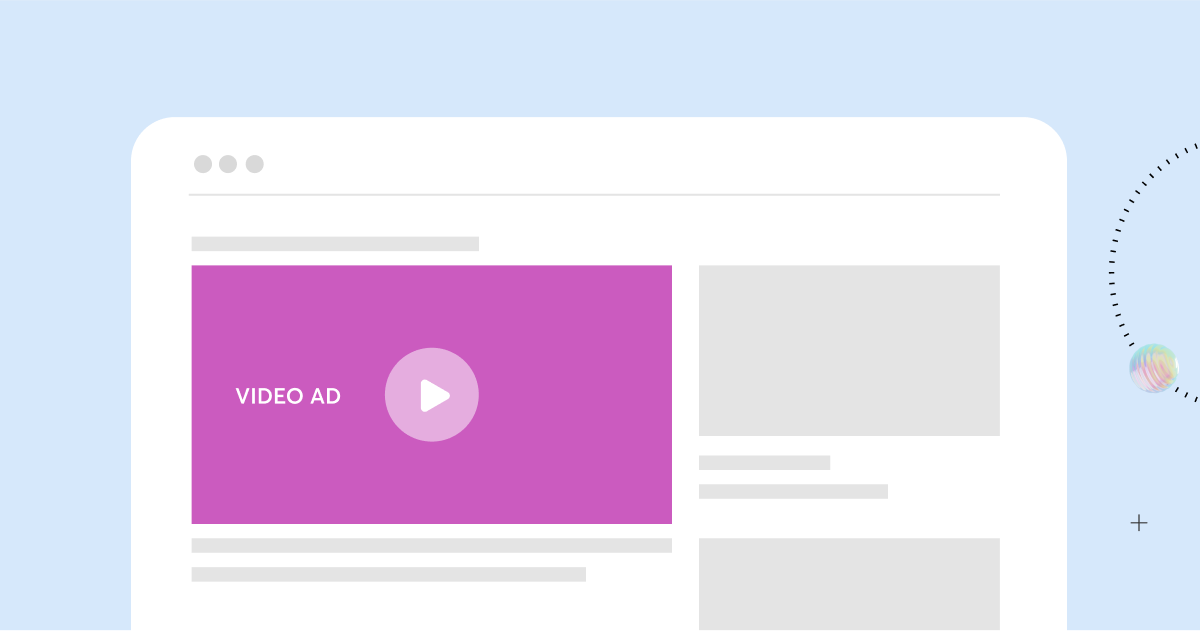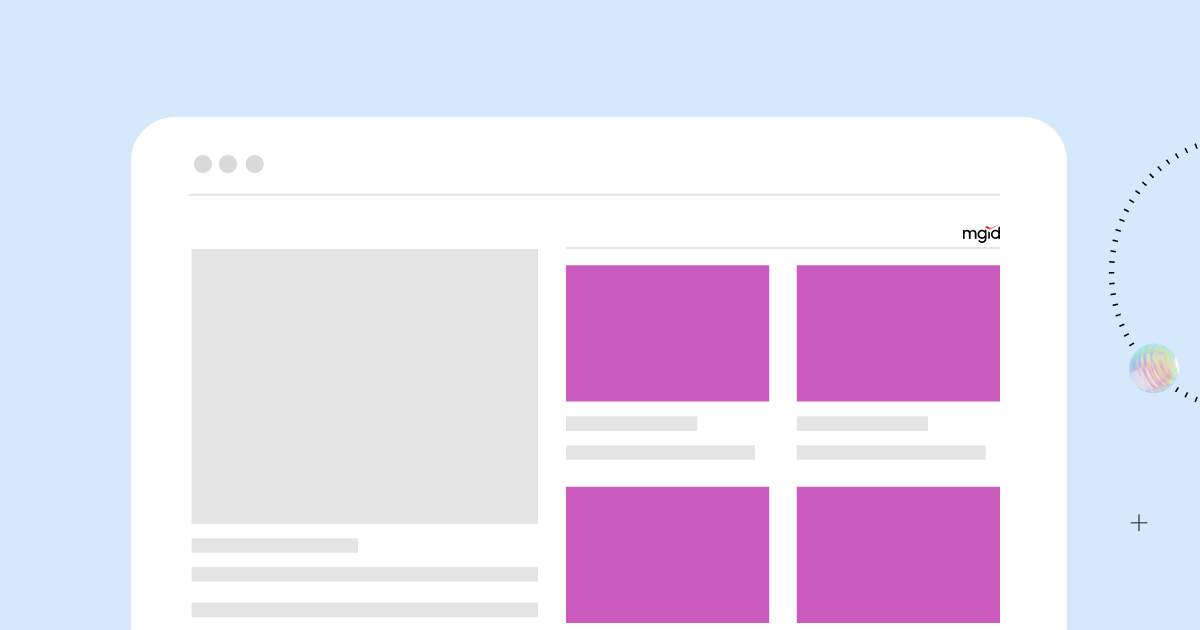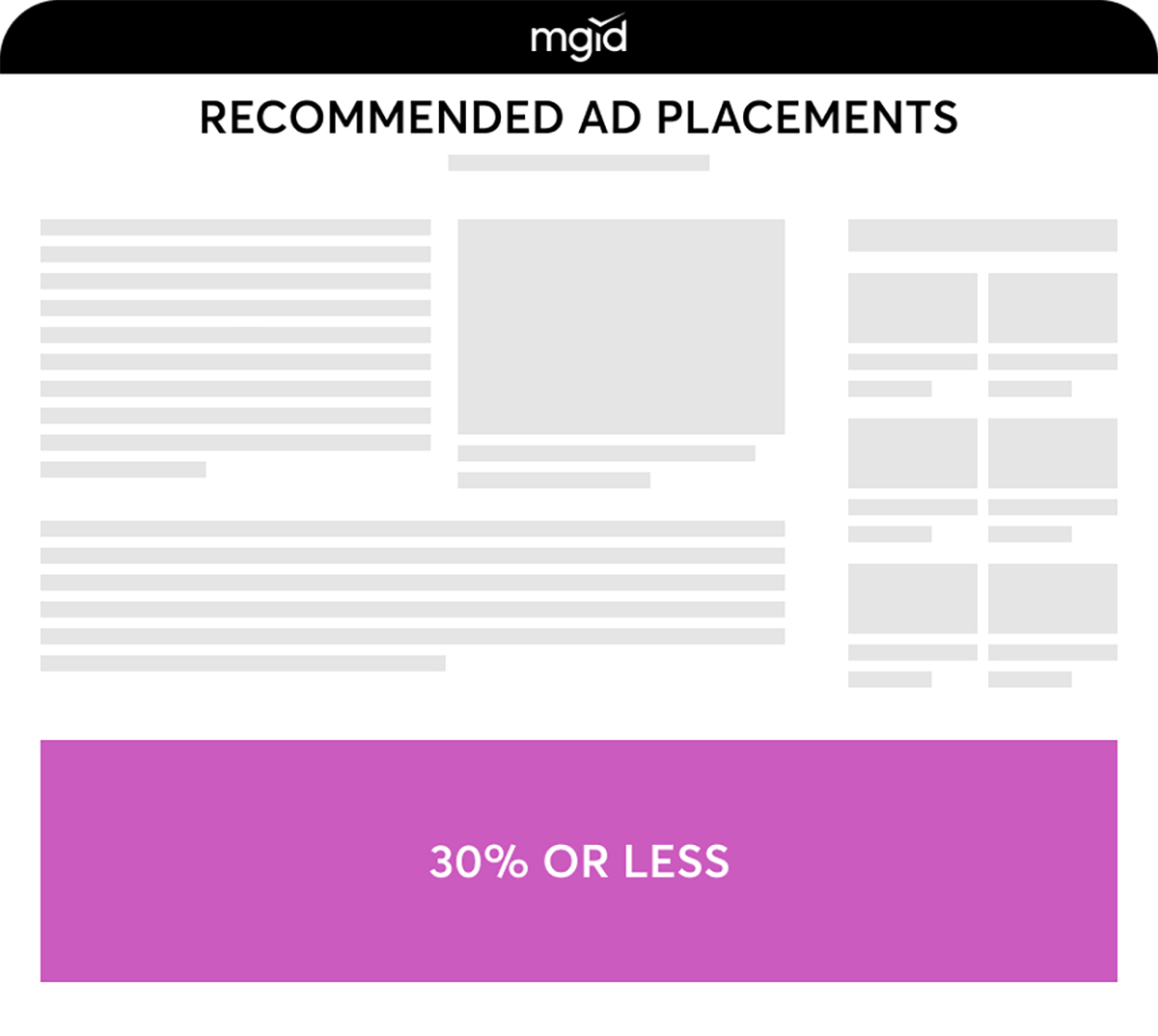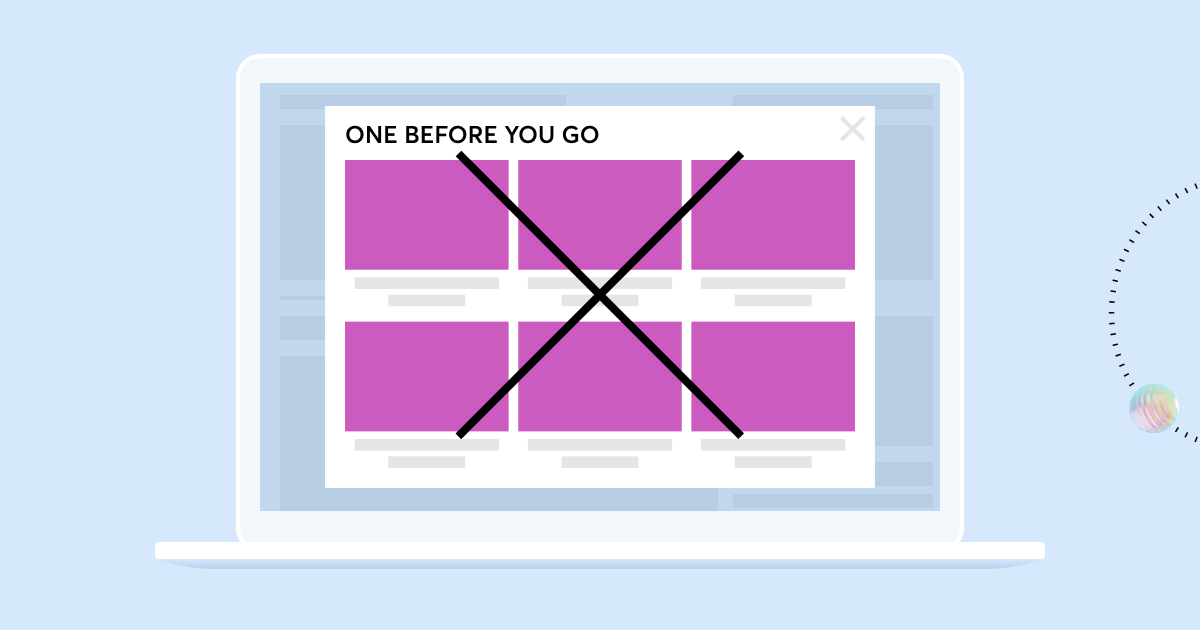You certainly won't dispute the assertion that ad placement matters. The success of an advertisement depends largely on where — and how well — it is placed. So, how does one choose the perfect ad placement?
Knowledge is power. Therefore, in this article, we will take a closer look at the different types of ad placements, as well as their advantages and disadvantages, to help you choose the ad placement that will be most beneficial on your website.
What Are Ad Placements?
An ad placement refers to the specific location on a website where an advertisement is displayed. This location should be chosen in such a way that the ad reaches its target audience. Ad placements can vary in size, format and visibility depending on the platform and the advertising strategy.
Additionally, ad placements can depend on the specific ad network being used. Different ad networks may have their own guidelines, requirements and available ad formats, which can influence the options for ad placement.
Ad networks typically provide publishers with the tools and resources to identify and implement ad placements on their websites. These tools may include ad tags, ad placement codes or integration options that allow publishers to specify where and how ads appear in their content.
Why Is Ad Placement Important?
An improperly placed ad is a missed opportunity, and every missed opportunity is money lost. While this is just a general explanation, in actuality, the correct placement of advertising greatly affects many different aspects of your website.
- Visibility and attention. Placing ads in strategic locations ensures that they are seen by a larger number of users. Highly visible and easily noticeable placements have a better chance of capturing the audience's attention and generating engagement.
- User experience. Thoughtful ad placement ensures that ads seamlessly integrate with the user interface, minimizing clutter and maintaining a good balance between content and ads. Randomly placed ads nullify the entire content of the website and compel the user to leave quickly.
- Targeting and relevance. Placing ads in relevant positions or alongside related content increases the likelihood of reaching the right people with the right message, thereby increasing the effectiveness of the advertising campaign.
Types of Ads
Before we begin our comprehensive classification of ad placement types, let's start by identifying the key types of ads. This knowledge will help us better understand the relationship between advertising types, as well as their impacts on user experience and their unique performance metrics and measurement methodologies.
Banner Ads

Banner ads are a form of online ads that typically appear as rectangular or square graphics on websites. They can contain images, text and interactive elements that lead users to the intended landing page.
Pros of banner ads:
- Wide range of advertisers. Banner ads attract a diverse range of advertisers looking to promote their products, services or brands. This offers websites the potential to collaborate with reputable brands, explore partnerships and access a wider pool of advertisers to maximize revenue opportunities.
- Easy implementation. Implementing banner ads is relatively straightforward, as there are established ad networks and platforms that facilitate the process. Publishers can easily integrate banner ads and minimize technical complexities by using the ad code provided by ad networks.
- Control over ad placement. Publishers have control over where banner ads are placed on their website or platform. They can strategically position the ads in high-visibility areas to maximize exposure and user engagement.
Cons of banner ads:
- Impact on user experience. Banner ads, if not carefully implemented, can negatively impact the user experience. Intrusive or irrelevant ads may disrupt the flow of content, frustrate users or lead to ad fatigue. This can result in decreased user satisfaction, reduced engagement or even ad-blocker usage.
- Ad blocking and viewability challenges. Ad-blocking software or browser extensions can prevent banner ads from being displayed, limiting the potential revenue for publishers. Moreover, viewability challenges may arise if banner ads are placed in areas that are not easily visible, reducing their effectiveness.
- Ad revenue dependency. Publishers who rely solely on banner ads for revenue may face challenges, as ad rates can fluctuate and depend on factors like market demand and advertiser budgets. Relying heavily on banner ads without diversifying revenue streams can make publishers vulnerable to fluctuations in the advertising market.
Video Ads

Video ads are a form of online ads that uses video content to deliver advertising messages to viewers. These ads are typically displayed within video players, appearing before, during or after online videos on various platforms. There are different video ad formats: pre-roll ads, mid-roll ads or post-roll ads. They can range in length from a few seconds to several minutes.
Pros of video ads:
- Higher revenue potential. Video ads are more interesting and engaging than regular banner ads, which is why they often command higher rates compared to other ad formats. Accordingly, this leads to higher revenue for publishers, especially if they have a substantial inventory of video content or partner with popular video platforms.
- Enhanced user engagement. As stated above, video ads are more likely to captivate and engage viewers through dynamic visuals, storytelling and audio elements. Increased engagement means longer user session durations, higher interaction rates and improved user satisfaction, which can positively impact a publisher's metrics and user retention.
- Diverse monetization opportunities. Video ads offer various monetization options for publishers. Alongside pre-roll, mid-roll and post-roll ads, publishers can explore video ad overlays, sponsored content integrations or even ad-supported video content platforms. This flexibility allows publishers to choose the monetization method that best suits their content and target audience.
Cons of video ads:
- Production and resource intensity. Creating high-quality video content and maintaining a video ad infrastructure can require a significant investment of time, effort and resources. Publishers need to ensure they have the capabilities to produce compelling videos and support the technical requirements of delivering video ads without impacting website performance.
- Potential ad fatigue and user experience concerns. Remember that even the flashiest video advertising is still advertising. Publishers need to strike a balance between ad placements and content to ensure that video ads do not overwhelm or annoy users.
- Ad blocking and viewability challenges. Ad blockers, browser settings or user behavior can all affect video ad viewability, potentially reducing ad impressions and revenue. Additionally, the complex technical requirements of delivering video ads across different devices and platforms can pose challenges for publishers, especially in regards to optimization and compatibility considerations.
Native Ads

Native ads are a form of ads that seamlessly integrates into the visual design and user experience of a platform or website. Native ads can take various forms, including sponsored articles, recommended content widgets, in-feed ads, promoted listings and social media ads. All of which match the style and format of the platform. To avoid concerns and misunderstandings, native ads are always labeled as sponsored or promoted.
Pros of native ads:
- Improved user experience. As we have previously stated, native ads blend perfectly into the surrounding content and fit perfectly into the overall user experience. Accordingly, when users are not hindered by ads, they tend to spend more time on the website and interact more with its content.
- Higher ad relevance and performance. Native advertising fits into not only the surrounding content but also the surrounding context. This increased relevance can lead to higher click-through rates (CTRs), better ad performance and ultimately, higher revenue for publishers.
- Increased monetization opportunities. Native ads provide publishers with additional monetization options beyond traditional display ads. By integrating native ads into their content, publishers can diversify their revenue streams and leverage the popularity of native advertising platforms.
Cons of native ads:
- Integration challenges. Implementing native ads on a website requires careful integration and customization to match the overall design and user experience. This can be time-consuming and may require technical expertise or support, particularly for publishers with complex or customized layouts. However, MGID can help you. As an experienced native advertising platform, we offer a wide range of integration types to make the launch process as seamless as possible.
- Balance of native and organic content. Publishers must strike a balance between native ads and organic content to maintain user trust and avoid overwhelming users with excessive sponsored content. It is important to ensure that native ads are clearly labeled as sponsored and do not compromise the integrity or authenticity of the platform's content.
- Limited control over advertiser content. Publishers have less control over the content of native ads compared to traditional display ads. While guidelines and review processes can help ensure the quality and relevance of ads, there is still a level of reliance on the advertiser to deliver suitable content that aligns with the publisher's values and audience preferences.
Other Types of Ads
You may also come across terms like full-page ads, half-page ads, and pop-up ads. They do occasionally continue to be used, but their intrusiveness and aggressive interference with user experience does not entitle them to be considered any effective advertising methods. They obstruct half to all of the content on the page and are intrusive and disruptive to the user experience, resulting in frustration and annoyance for visitors who are more likely to never come back to your website after such an experience. Therefore, we do not recommend that you use these types of advertising, especially since there are other modern and effective ways.
Types of Ad Placements
Now that you are aware of the main types of advertising, we can talk about ad placement. The very first thing you need to know is there are two key terms that relate to ad placement: above the fold and below the fold.
Above the Fold

Above the fold refers to the area of a webpage that is visible without the need to scroll down. The term originates from the print newspaper industry, where important news articles and advertisements were featured on the top half of the front page, visible even when a newspaper was folded.
| Pros | Cons |
|---|---|
| Increased visibility | Limited space |
| Higher click-through rates | User experience considerations |
| Better advertiser exposure | Ad blindness |
Below the Fold

Below the fold refers to the area of a webpage that is only visible after users scroll down. Like the previous term, this was derived from the print newspaper industry. It alludes to where less important articles and advertisements were placed: the lower half of the front page or on subsequent pages.
| Pros | Cons |
|---|---|
| Increased content focus | Reduced initial visibility |
| Enhanced user experience | Decreased engagement |
| Seamless integration | Limited exposure |
Sidebar

As the name suggests, the sidebar ad placement refers to the positioning of ads in the sidebar of a webpage — the vertical columns located on either the left or right-hand side of the main content area. Sidebar ads are typically rectangular or square-shaped and can be either static or dynamic, depending on the design and functionality of the website. They are often displayed alongside the main content and can be visible throughout the user's interaction with the webpage, regardless of scrolling.
| Pros | Cons |
|---|---|
| Increased visibility | Limited space |
| Persistent presence | Ad blindness |
| Complementary content | Mobile considerations |
In-Content

In-content ad placement refers to the practice of integrating ads within the body of the content on a webpage. The hallmark of in-content advertising is its integration with content flow so that it appears as part of the editorial or informational piece. In other words, ads are designed to match the look and feel of the surrounding content in order to maintain a coherent user experience. In-content ads may take the form of text, image or video.
| Pros | Cons |
|---|---|
| Native integration | Distraction from content |
| Contextual alignment | Potentially misleading for users |
| High CTR | Ad blocker impact |
Interstitial

Interstitial advertising refers to displaying full-screen ads that appear between content transitions, such as when a user navigates from one page to another or waits for a web page to load. These ads typically cover the entire screen and require user interaction, such as clicking a button or closing the ad, in order to proceed to the intended content. Interstitial ads often use visually appealing and attention-grabbing formats, including rich media, video or interactive elements, to capture the user's attention during these transitional moments.
| Pros | Cons |
|---|---|
| High visibility and impact | Disruptive user experience |
| Engaging and interactive formats | Extended loading times |
| Effective for monetization | Risk of the user leaving the website |
Attention: Poor Ad Placement
Mistakes are inevitable even when it comes to choosing an ad placement. In this case, bad ad placement means displaying advertisements in inappropriate or disruptive locations on a website. Here are some examples of cases to consider and avoid.
- Intrusive and disruptive placements. Ads that pop up, cover the entire screen or obstruct the main content can be highly annoying and intrusive to users. These types of placements can lead to frustration and poor user experience. Use them with caution and within reason.
- Misaligned content context. Placing ads that are irrelevant or contradictory to the surrounding content can confuse and frustrate users. For example, displaying an ad for a competing product on a webpage that is discussing the benefits of a different brand can create confusion and dilute the overall message.
- Excessive ad density. Overloading a webpage with too many ads can result in a cluttered and overwhelming experience for users. It can slow down page load times, interrupt content flow and make it difficult for users to focus on the desired information.
- Deceptive ad placements. Placing ads in a way that makes them appear like regular content or misleading users into clicking on ads is considered unethical and deceptive. This practice erodes trust between users, advertisers and publishers.
- Poorly optimized mobile placements. Failing to optimize ad placements for mobile devices can lead to issues such as ad overlap, illegible text or slow loading times. This can frustrate mobile users and result in a negative perception of the website.
How To Choose The Best Ad Placement on Your Website?
With such a staggering list of advertising types and placements, a reasonable question arises: how to choose the best ad placement on a website? Of course, you must consider your target audience and goals. Additionally, the layout of your website is also important when choosing the right ad placement. Employ ad placement optimization to make an informed decision: A/B testing, heat mapping, user feedback analysis and data-driven insights.
But you didn't come here for generic advice, did you?
Through years of experimentation and working with numerous publishers, MGID has come up with proven ad placement tips and tricks that deliver real results without disrupting the user experience. Here are some of them:
- Use in-content ads. Seamlessly integrated within the main content, in-content ads have a higher chance of attracting user attention. Ensure that the ad blends naturally with the surrounding content and provides relevant information or solutions to the user.
- Optimize mobile ad placements. Ensure that your ads are optimized for smaller screens and utilize formats such as in-app banners and native ads. Avoid pop-up ads that cover the entire screen, and, if using video ads, consider using muted or opt-in formats where users have control over when and if the sound is enabled.
- Leverage native ads. Native ads blend in with the content and feel less intrusive, which results in better user engagement and a more positive user experience.

We have also prepared for you the most important do's and don'ts that will allow you to place ads like a pro.
1. Remove Ads From the Header on Both Mobile and Desktop Websites

Many publishers believe placing large, obtrusive ads will translate into more revenue. But analytics prove that this tactic does not increase engagement, while interrupting the cohesion of your website.
2. Place No More Than One Native Ad Unit in the Article Page, and One on Sidebars

Try to find a reasonable balance between content and ads, so that your advertisements do not overshadow the entire page.
3. Position No Ads Above Your Quality Content on First Screens of Mobile Websites
Because mobile screens are too small to display ads and content simultaneously, placing ads first will sacrifice the users overall viewing experience.
4. Use Less Than 30% Of Your Desktop Website’s First Screen for Ad Space

The user’s first impression of your initial page should not be overpowered by ads. A 30% ad, 70% content is a practical ratio for complementing quality content with ad content to viewers.
5. Use PG-Rated Content for Website Buying and Otherwise Acquiring Visitors
It is recommended to avoid content that could be potentially shocking or offensive to your audience. This ensures a positive experience for all kinds of potential website visitors.
6. Avoid All Forms of Pop-Ups, First Page Interstitials, Floating Ads and Overlays

For years, these ad formats have been recognized as overly aggressive and ineffective. Ads of this nature are antiquated by 21st century ad standards.
Conclusion
By understanding the strengths and limitations of each ad placement, publishers can make informed decisions that lead to successful website monetization. And by joining the list of MGID publishers, you will be able to receive comprehensive advice on the best methods of ad placement for each specific case — just follow the link to learn more about what you will be able to achieve with MGID.





